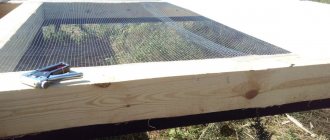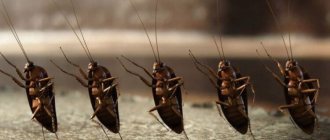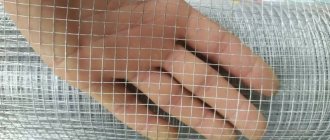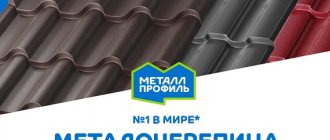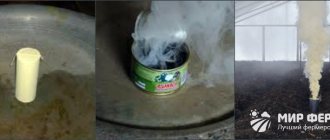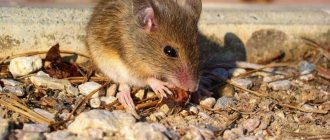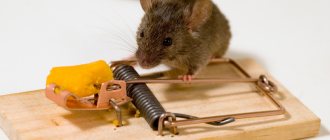Frame technology has a drawback (which, however, can be prevented at the stage of laying the foundation). These are mice. The walls in the frame are usually filled with fairly light insulation, which is not a barrier for mice, and they can live and breed there comfortably. Let's look at how to prevent rodents from appearing in a frame house or how to deal with them if such a misfortune does happen to you.
Net
One of the most reliable and effective ways to protect a frame house from rodents is a metal mesh that wraps around the base and corners of the house.
The level of such a mesh must be at least 1 m, the cell size no more than 1 cm * 1 cm, and the wire thickness no less than 2 mm. Advice. If the house has already been built, then the mesh is dug in around the perimeter of the house to a depth of up to 80 cm. And if rodent holes already exist, then the depth is selected so that the edge of the mesh is below the dug passages.
How to protect your home from mice
It would seem what kind of troubles homeowners can have in winter: look after the garden, remove snow and prepare for the next working season. But no, country estates do not allow you to relax for a minute and throw up new problems. To ensure that you are not disturbed by hordes of mice and rats during the winter holidays, so that in the spring you do not find dust instead of clothes and other things, you should take care in advance by providing protection for the foundation. walls and ceilings.
Frame house and mice
Forum members believe that the favorite wintering place for rodents are frame houses and houses made of timber. However, stone dwellings are not immune to this problem: mice nest in materials such as polystyrene foam, which is often used as insulation. As practice shows, gray animals do not disdain mineral wool and even glass wool, which, in theory, should irritate their skin and mucous membranes.
According to experts, it is still preferable to use mineral wool during construction, and carry out all thermal insulation work carefully, avoiding any cracks through which tailed animals can penetrate.
A participant in our forum talks about his successful experience of using ecowool:
id33637092FORUMHOUSE user
For two years, I haven’t noticed any mice in my house made of timber (cookies for tea, sugar have been lying open for weeks, no one has chewed them yet in two years). Manufacturers of ecowool swear that no living creatures can live in it.
A user of our forum am-b from Moscow got rid of mice during the renovation of his house: he tore off all the floors, walls and ceiling, finding numerous mouse passages and nests in the glass wool. During the subsequent installation of the floors, he tightly laid mouse protection between the subfloor and the main floor - a 10 cm layer of expanded clay. In this way, a so-called “expanded clay castle” was created, which became a real obstacle to rodents getting into the house.
Then all the corners (ceiling, wall, floor) were covered with galvanized mesh with a fine mesh; it was important not to miss a single joint. Only after all these measures were the walls and ceilings insulated and finished. As the owner notes, for the third year now there has not been a single mouse in the house, neither a field mouse nor a house mouse.
tor28 also recommends using crushed stone to protect against rodents, spilling it while pouring the strip foundation, and a fine-mesh metal mesh to protect the home from below and from the sides. If the house is already built, you can try burying mesh along the foundation - deeper than mouse and rat holes. Usually it is 20-30 cm, sometimes up to 80 cm. The mesh can be dug not near the foundation itself, but away from the house, the distance from the foundation to the mesh can be covered with a layer of crushed stone, the walls of the house a meter from the foundation can also be covered with mesh. As an option, make a narrow, deep ditch around the perimeter, which is filled with large crushed stone.
Protecting a frame house from mice
GrandAmigo did something different during the construction of a frame summer house: it made the floor uninsulated, only the shield was a floorboard along the joists, which lay almost on the ground, on single bricks. To prevent rodents from crawling into the cracks between the edge of the floor and the outer cladding, he cut galvanized strips 10 cm wide, which he nailed to the floor along the edges along the entire perimeter (except for the doorway) so that the strip rested against the outer cladding. Then this strip was covered on top with insulation and sheathing from the inside. In his comment on our website, he talked about the result of these measures: mice sometimes squeak and rustle from under the floor, but they do not enter the house.
How to properly get rid of mice - old-fashioned methods
Forum members recall the following ancient methods of fighting rodents:
- add slag, tobacco dust, ash, dry burdock, pine branches, mint, wormwood, etc. to the insulation;
- place burnt logs under the floor - burnt wood repels mice with its smell;
- Scatter broken glass around the perimeter of the subfloor;
- Sprinkle hot red pepper along the walls and behind the walls of the wooden house;
- catch a house mouse and singe it: rodents do not like the smell of burning wool;
- put a tuft of sheep's wool in an old aluminum saucepan, make holes in the lid, set the wool on fire and place it in the basement: the smoke will spread slowly and evenly under the house.
To get rid of mice on your property:
- scatter cotton balls soaked in birch tar around the garden;
- fill the mouse holes with water;
- hang water and beer bottles on metal rods around the perimeter of flower beds and plants, occasionally rearranging the rods: the noise will scare away rodents;
- for the same purpose, bury glass bottles: the wind entering them will create noise interference for rodents;
- put rags soaked in Vishnevsky’s ointment into the holes;
- modern option: put a firecracker in there, covering it with earth: mice cannot stand powder gases.
Read about rodent control using non-chemical means.
Poison and glue traps
Poisonous compounds are one of the effective ways to stop rodent infestations. However, it is also unsafe. In addition to the fact that such substances can be dangerous for people and pets, there is also a risk that a poisoned mouse or rat will crawl under the floor, where they cannot be reached. It is better to use a glue trap: rodents approach the bait and stick to the solution applied to some surface, boards, cardboard, etc. However, it should be borne in mind that large rats can escape from such a trap, and they do not get there right away.
Thunderstorm of mice
Those who cannot or do not risk using poisons will be helped to get rid of mice, rats and even moles by their natural enemies - domesticated stoats, weasels, hedgehogs and cats or even dogs. Mice will feel like masters in a wooden house only if there is no cat in the house. However, not every cat will be able or willing to do such work. It is more likely that a mustachioed tabby will serve you well if it was adopted as a kitten from an outdoor cat. It was the neighbor's cat who helped Snickers overcome the arrogant mice, and the owner didn't even notice when the animal was hunting.
VladimirS does not believe in magical stories about cats: a whole flock of these animals living nearby was of no use. Some cats sometimes brought mice into the house, after which, after playing, they were released.
Lilith suggests trying a not very pleasant method for those who don’t want to bother with pets: bring cat litter and put it in the corners. True, you too may run away from the house along with the mice, overwhelmed by the terrible smell.
And if the cat disdains “dirty work” and prefers to bask in the sun, thinking that “we are well fed here too,” you will have to decide on extreme measures.
Mousetrap
In this case, you have to trust your ingenuity and make (or buy) a mousetrap. The advantages of this method of catching rodents are obvious: there is no threat to the health of people or pets, and you do not depend on the mood or skills of your cat. All that remains is to choose an effective device and the right bait. With mice it’s easier: they eat almost everything, and cracklings or a piece of fried lard with skin will seem like a tempting delicacy to them.
It’s more difficult with rats. There are known cases when these animals entered food premises and gnawed not on food, but on packaging and other things that were inedible from a human point of view. Forum members say that rats “peck” well at dry dog food and sunflower seeds.
You can make your own rodent traps.
Option 1 ivan.kulibin offers an automatic mousetrap: place a board on a bucket half filled with water so that the mouse can walk on it. Then nail the two planks crosswise. The length of one should be slightly larger than the diameter of the bucket, and the second should be smaller. Attach the bait to one side of a short board. The mouse climbs the ladder onto the bucket and, after walking along a short stick, falls into it, after which the cross under its own weight returns back, and the mousetrap is ready for use again. This way you can catch 8-10 mice per night.
When making such a trap, it is important to choose the right length of the short board so that it returns to its place on its own, and the rodent, having fallen into the water, cannot reach it.
Option 2 kpc recommends using glass beer bottles. Pour some sunflower oil into it, preferably with a scent, unrefined, and leave it in places where you have seen rodents. Bottles should be placed at an angle of at least 30-40 degrees, secured with rope or wire so that mice can climb on them. After a week, you will have 5-7 pests in each bottle.
Option 3 serg-e introduced another trap that can be made from a plastic floppy box. If there are a lot of such boxes, you can make disposable mousetraps. But they have one drawback: the “beast” gets there and remains alive, so you personally have to decide its fate.
How to get rid of mice in a frame house.
Ultrasonic generator
Some summer residents note that devices such as electric cats that operate on the basis of ultrasound can be effective. However, repellers have negative aspects: the results of their work are not immediately noticeable, the batteries run out quickly, and the barely audible sound of the devices irritates people themselves, so it is better to turn them on when no one is at home.
The topic of a mouse in a frame house is discussed in more detail by the forum of our portal, fully and comprehensively - following the link you will find answers to all your questions.
Based on materials from participants of the “House and Dacha” forum
Subscribe to our Telegram channelExclusive posts every week
A bit lukewarm
When building frame houses, plastic is often used as insulation, as it has low cost and excellent thermal insulation characteristics. But it is this choice that often leads to the appearance of mice in the house. The fact is that plastic is an excellent place for mouse nests to appear.
Fortunately, this problem can be solved very simply. It is enough to make a choice in favor of a tepid one. Of course, unlike plastic, installing lukewarm panels will require more time and special skills, but the resulting result will pay off all the costs and difficulties.
Causes of rodents
Mice sneak into a frame house for several logical reasons. First of all, this is a search for food, which is always available in residential buildings. They are especially attracted by the presence of large reserves of cereals. There is also a high probability of their appearance in winter for the purpose of shelter from the cold. In places where winters are quite cold, this is even more true.
Frame houses are not a particular obstacle to the penetration of rats and mice. When constructing a building, it is very difficult to avoid gaps in the floor or at the joints. The partitions here are often hollow, and a drywall bug is unlikely to keep mice out and prevent them from getting inside. In a frame house, when lathing, empty spaces are filled with insulation. Mice easily gnaw through them and make nests there. This is especially true when using low-quality material and improper installation.
Traditional methods of fighting
The war between rodents and humans did not begin yesterday, and it would be naive to believe that our distant ancestors did not face the same problems as us. The only difference is that previously people were very limited in capabilities and technology, so they fought mice and rats with improvised means, which were often very effective.
To protect the house from rodents, our ancestors most often added various impurities to the insulation, such as:
- Tobacco dust;
- Ash;
- Slag;
- Small pine branches;
- Dried wormwood;
- Mint.
These additives have an aroma that is unpleasant for rodents, so the latter try to avoid them. Of course, this method should not be considered as the only solution, since modern means of controlling rodents are still more effective. However, it can be used in combination with other methods.
Rodent control
If the stage of protecting your home from pests was skipped, and mice still appeared in the frame, you can fight them in several ways. How to get rid of mice in a frame house? The most common methods used are mousetraps, snares and chemicals to kill rodents.
Mechanical methods
If there are mice in a frame house, you can resort to the most popular method - installing mousetraps. Remember that the method will bring the desired effect only if all the cracks and holes through which the mice initially entered the room are sealed.
Mousetrap.
Mousetraps have a number of advantages over chemicals: they are safe for children and pets, a rodent will not die in the partitions of a frame house and will not cause an unpleasant odor.
Traditional methods
No less effective are numerous folk methods of pest control:
- Wine cork. The material is cut into small pieces, mixed with any cereal, and a small amount of unrefined sunflower oil is added to the resulting mass. The bait that is eaten by the mouse ends up in the stomach, where it swells and gets stuck.
- Naphthalene. Rodents simply cannot stand the smell of the substance. To prepare a repellent, you need to mix naphthalene with sawdust and scatter it in the area of burrows and pest passages.
- Semolina. The cereal is mixed with dry plaster or putty and scattered near mouse holes. Once in the stomach, the substance hardens and causes the death of the pest.
- Quicklime. Mixed with sugar and placed near the minks. Rodents happily eat the bait. In the stomach, lime reacts with gastric juice, causing severe burns and causing the death of the mouse.
Ultrasound methods
It has been established that rodents react painfully to high-frequency ultrasound. Modern electronic repellers that operate on mains or battery power. They emit sounds that cause panic in mice, a feeling of physical pain, and force them to hastily leave the room.
Cat hunting for mice.
Pay attention to the working area of the device; if the power is not enough, rodents will only leave certain rooms.
Mousetraps
If mice do sneak into the house, then we are no longer talking about repelling them, but about exterminating the rodents. In this case, you can turn to a proven method - mousetraps and glue traps.
Such a “mechanical war” rarely ends quickly and can last for many months, but with due persistence and a large number of mousetraps, its outcome is obvious. Sooner or later, the mouse population will leave the house on its own or “first with its hind legs.”
Frame house - reasons for popularity
House construction using frame technology is a new type of construction, where all load-bearing structures and cladding consist of wood materials, plywood or OSB boards. The frame very quickly became popular due to its low cost. If previously they served people as temporary housing, for example, as a dacha outside the city, today they are being built for year-round living.
By the way, mice are less likely to be found in frame houses for temporary residence, because there are no proper conditions for them there.
A high-quality structure using frame technology should be:
- Reliable, built from high-quality lumber;
- Withstand the loads placed on it;
- Have high levels of resistance to natural factors;
- Comfortable for living;
- Be warm if built for year-round use.
This type of construction is also chosen because the construction process is several times shorter than that of brick houses. The foundation for the frame is constructed in a lightweight manner, which means that the costs for it will not be as high as when constructing, for example, a slab.
An advantage, and a significant one, is the fact that they are erected year-round, that is, at any time of the season. People also like this type of construction because for a small amount you can build a house according to any architectural design. The disadvantage that many people face is rodents. Mice infest the insulation and walls of a frame house, disturbing the comfort of household members and completely depriving them of peace.
The invasion of these creatures significantly damages the frame, and this affects its quality characteristics, integrity and service life.
Cat
You can add their ancient enemy – the cat – to the collection of proven methods in the fight against rodents. If the residents of the house are not allergic to these pets, then bringing a cat into the house will help solve the problem with annoying rodents. In some cases, the cat won't even have to catch mice. Rodents perfectly recognize the smell of their enemy and will probably prefer to retreat as quickly as possible.
Important. Sometimes the smell of a cat alone is not enough to drive mice away from the house, so the cat will still have to deign to go hunting. However, decorative purebred cats are not always able to hunt mice, so if your house is filled with mice, then it is best to get an ordinary purebred cat.
What to consider during construction
The first rule for those who would not like to encounter rodents is maximum tightness. Mice enter through the cracks, after which they chew through the material and cause damage. This applies to laying insulation, sealing ventilation and other openings, and laying pipes.
The next, and perhaps the main question is the choice of material. First of all, we are talking about insulation. When choosing insulation, we are usually guided by cost considerations, but we do not take into account how much it will cost us to repair the insulation system after pests have taken over there. The entire layer of thermal insulation can become unusable in just a few months!
It’s important to figure out how realistic it is for a rodent to get into the room. If this is a house on a site where they do housework and where there are always a lot of mice, then you should immediately choose a material that is uninteresting for rodents. If mice are an unlikely occurrence, then you can choose any insulation, but take the issue of tightness seriously - prevent the presence of cracks in the ceiling, floor, near pipes, and also prevent rodents from entering the room through an open door or windows.
Ultrasound sources
Modern methods include ultrasound generators, which repel rodents during operation. It is worth saying that such devices have a controversial reputation, since the Internet knows many stories about how rodents calmly walked next to a working ultrasound generator and did not pay any attention to it.
For the most part, this is due to low-quality ultrasonic generators that have flooded the domestic market. Therefore, if you still decide to buy such a device, be sure to choose a high-quality model from a brand with a good reputation.
Note! Ultrasonic generators affect not only rodents, but also pets. Therefore, these two methods do not combine well with each other.
Materials that are sometimes damaged by rodents
Mineral wool - sometimes damaged by rodents, but positions itself as a material in which rodents do not live.
The fibers are rarely damaged, but mice can build nests in them. When using this material, it is important to lay the mineral wool so that it does not deform.
Extruded polystyrene foam is a fairly dense raw material, so rodents rarely penetrate it, and yet such cases do occur. Unfortunately, this material will not be a barrier for rats.
Polyurethane foam is a dense material that is rarely damaged by rodents. However, if constant protection is not provided, over time it becomes less dense, begins to deteriorate and can easily be chewed by pests.
To ensure that this moment does not come so quickly, you need to think about reliable protection of the foam from moisture and ultraviolet radiation. This can be achieved through coloring.
Glass wool practically keeps mice out, and even a thin layer is enough. This is achieved due to the traumatic composition. However, over time, its properties may become less dangerous for rodents.
Chemicals
The last method of rodent control that is worth considering is various chemicals, poisons and pesticides. They act as a kind of “doomsday weapon” when other methods do not help.
Despite the high effectiveness of such products, they can be dangerous for pets and residents. Therefore, it is worth thinking several times whether it is worth using them, and it is advisable to entrust this process to specialists.
The note. Another disadvantage of using chemicals is that a poisoned rodent can end its life in an inaccessible place, where it will rot for a long time, filling the house with an extremely unpleasant odor.
When fighting rodents, it is worth remembering that the problem is easier to prevent than to solve. Therefore, the main emphasis should be placed on preventive methods of protecting the house (mesh and tepid). If mice do break into the house, then the problem should be solved as soon as possible, since as the population increases, the fight against rodents will become longer and more difficult.
What harm do rodents cause?
Mice, rats and other rodents can easily enter a frame house without certain protective measures. By doing this, they not only frighten the owners, who are afraid or disdain such guests, but also cause harm. Destruction can occur in any corner of the home. They chew through concrete or wooden floors, wiring, and a wide variety of objects in the house. Often pests destroy winter supplies or other food.
If mice settle in basements, where it is usually damp and dark, they will begin to actively reproduce. In this case, dealing with their huge number is even more difficult. The most dangerous thing is that rodents are carriers of dangerous infectious diseases, for example, cholera, various intestinal diseases, and leptospirosis. Therefore, it is necessary to get rid of them as soon as possible, and for this we will familiarize ourselves with the methods of dealing with mice.
Where do mice go?
Due to the peculiarities of its construction, a frame house is an attractive place for a rodent to stay. A wooden or, less commonly, metal frame made of racks, support beams, and struts is sheathed on the outside and inside with protective and finishing materials. Slab insulation is laid inside the hollow walls. Floors are often arranged on joists, between which thermal insulation is placed in the form of rolls or slabs.
The technology involves installing ventilation gaps to remove condensate and circulate air in structures. This protects them from rotting and moisture accumulation.
At the same time, all cracks and technological gaps are an accessible route for mice to enter. Favorite habitat is insulation slabs. Rodents make passages in them, make nests, and breed numerous offspring.
Mouse fuss is annoying, but in addition to this, considerable damage is caused to the insulation. The structure loosens and disintegrates over time, which leads to loss of heat-insulating properties.
Research conducted in the USA at the University of Fisheries, Forestry and Wildlife Sciences found that over six months of rodent activity, the thermal conductivity of insulation increases 5 times.
The experiment involved families of house mice. They were planted for 6 months in imitation walls, insulated with common types of insulators for frame, brick and concrete houses - extruded polystyrene foam, basalt or glass wool, vermiculite, cellulose ecowool. Foil vapor barriers and isocyanate did not stop the sharp teeth.
Being near mice is dangerous for electrical wiring. Violation of the insulation from the sharp teeth of rodents can lead to a short circuit and even a fire.
Wooden structures - frame elements, floors, ceilings - are thoroughly damaged by gray animals. These are undesirable phenomena that lead to a gradual loss of strength and disruption of the aesthetic appearance of the finish.
Why do rodents appear?
In the summer they feel great outside, but with the arrival of the first cold days they begin to look for shelter for the winter. The best option for animals is human housing and outbuildings, where it is not only warm, but also has food supplies. A house with a large mouse colony already living next to it is more likely to be attacked by tailed animals.
Animals start and quickly multiply where there is food supply for them: garbage dumps, livestock farms, shops, public catering facilities, abandoned buildings, etc. Their numbers are growing rapidly, space is becoming scarce, so rodents are exploring new territories.
